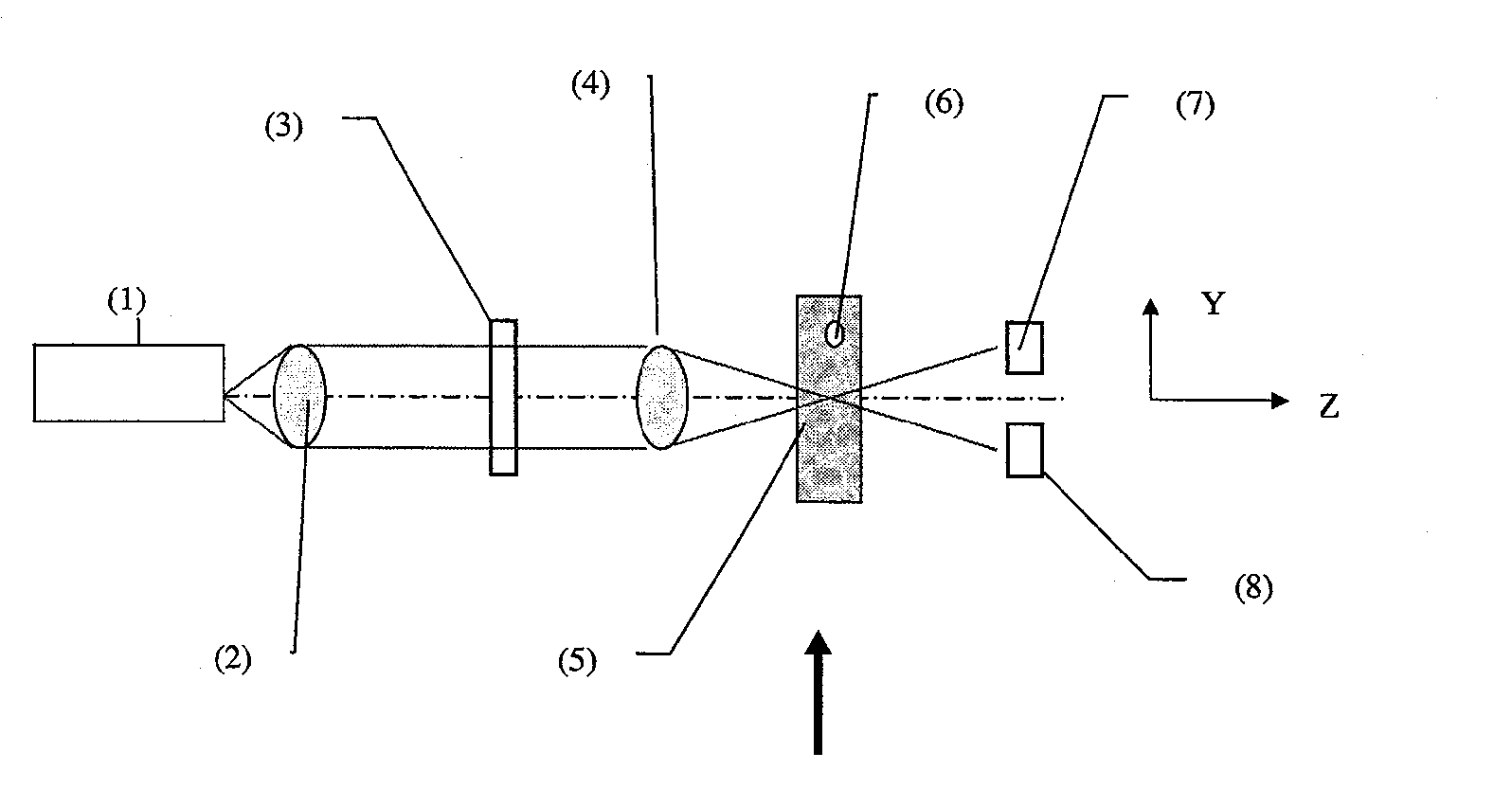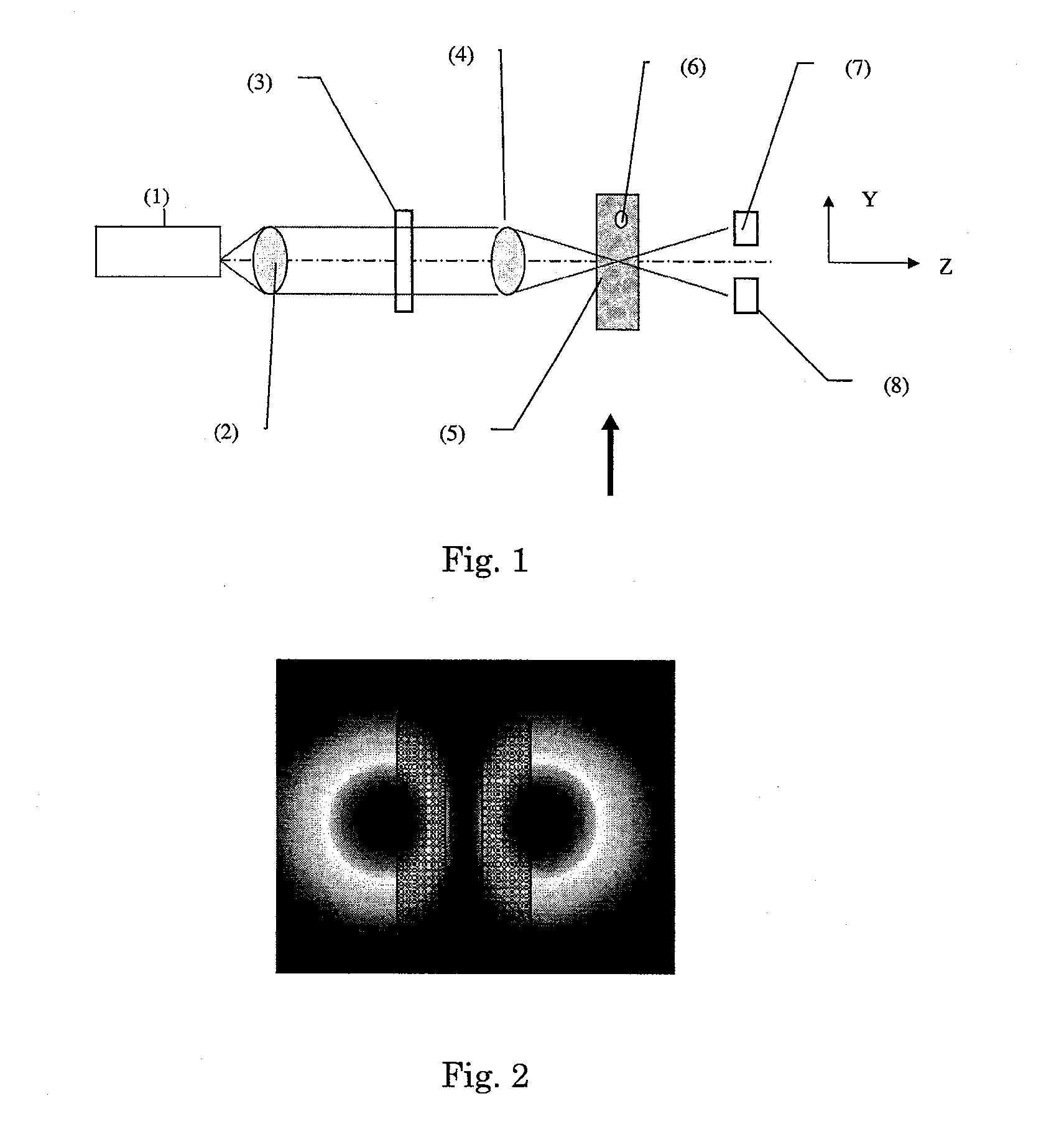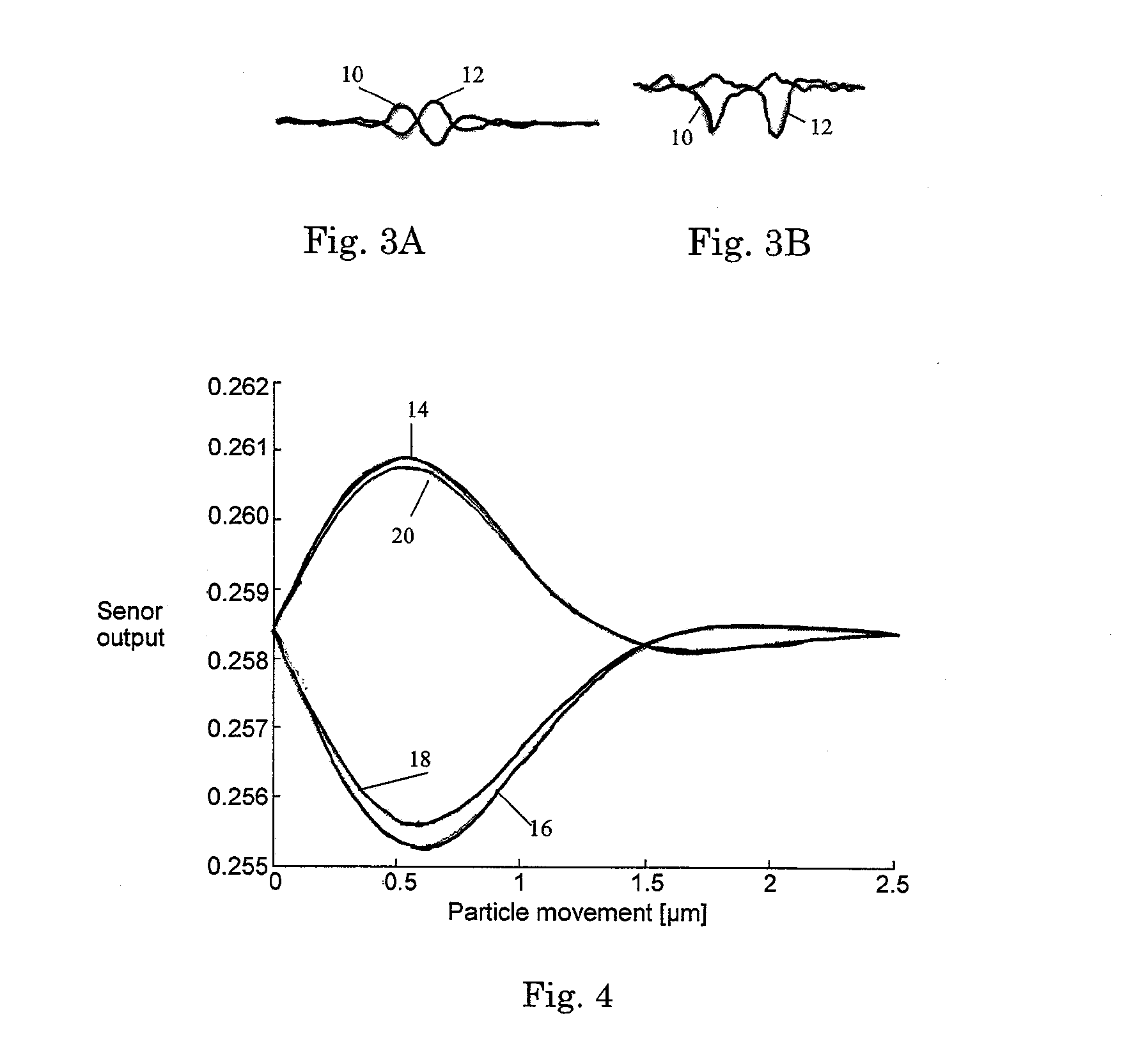Detection scheme for particle size and concentration measurement
- Summary
- Abstract
- Description
- Claims
- Application Information
AI Technical Summary
Benefits of technology
Problems solved by technology
Method used
Image
Examples
Embodiment Construction
[0039]FIG. 1 schematically shows an embodiment of a particle monitoring system. The system shown in FIG. 1 comprises a laser (1), which generates a Gaussian beam; collimating lens (2); phase mask (3), which converts the Gaussian laser beam into a structured dark beam; a focusing lens (4), which focuses the dark beam inside a cuvette (5) through which water containing particles (6) flows in the direction of the arrow; and two detectors (7) and (8). It is noted that in the case of airborne particles, the air stream bearing the particles need not be confined within a cuvette. The positioning of the detectors with respect to the illuminating dark beam pattern is shown in FIG. 2. In this embodiment one detector is positioned over each intensity lobe of the original dark beam. As particles cross the beam the output intensity pattern is modified and the detectors sense the change. The detector spacing can be optimized for sensitivity by aligning it to the maximum intensity gradient of the ...
PUM
 Login to View More
Login to View More Abstract
Description
Claims
Application Information
 Login to View More
Login to View More - R&D
- Intellectual Property
- Life Sciences
- Materials
- Tech Scout
- Unparalleled Data Quality
- Higher Quality Content
- 60% Fewer Hallucinations
Browse by: Latest US Patents, China's latest patents, Technical Efficacy Thesaurus, Application Domain, Technology Topic, Popular Technical Reports.
© 2025 PatSnap. All rights reserved.Legal|Privacy policy|Modern Slavery Act Transparency Statement|Sitemap|About US| Contact US: help@patsnap.com



